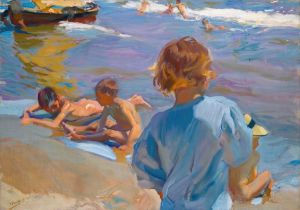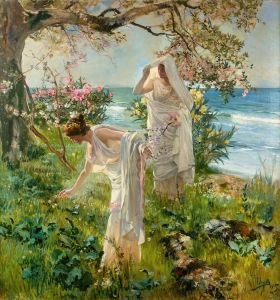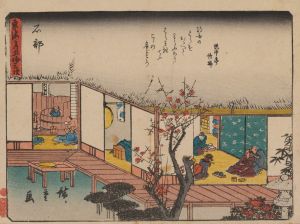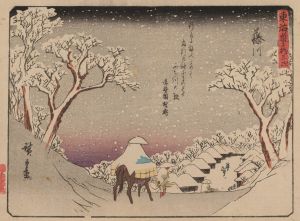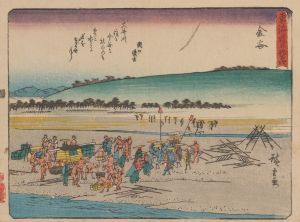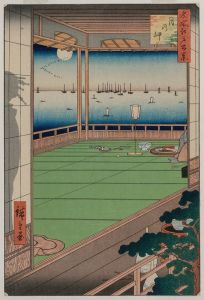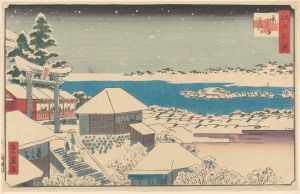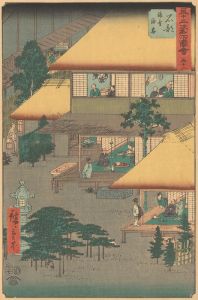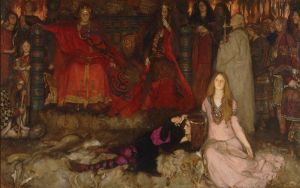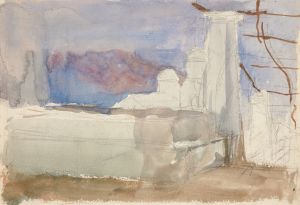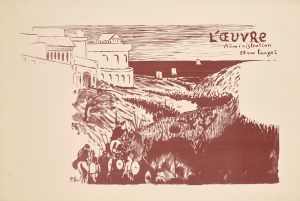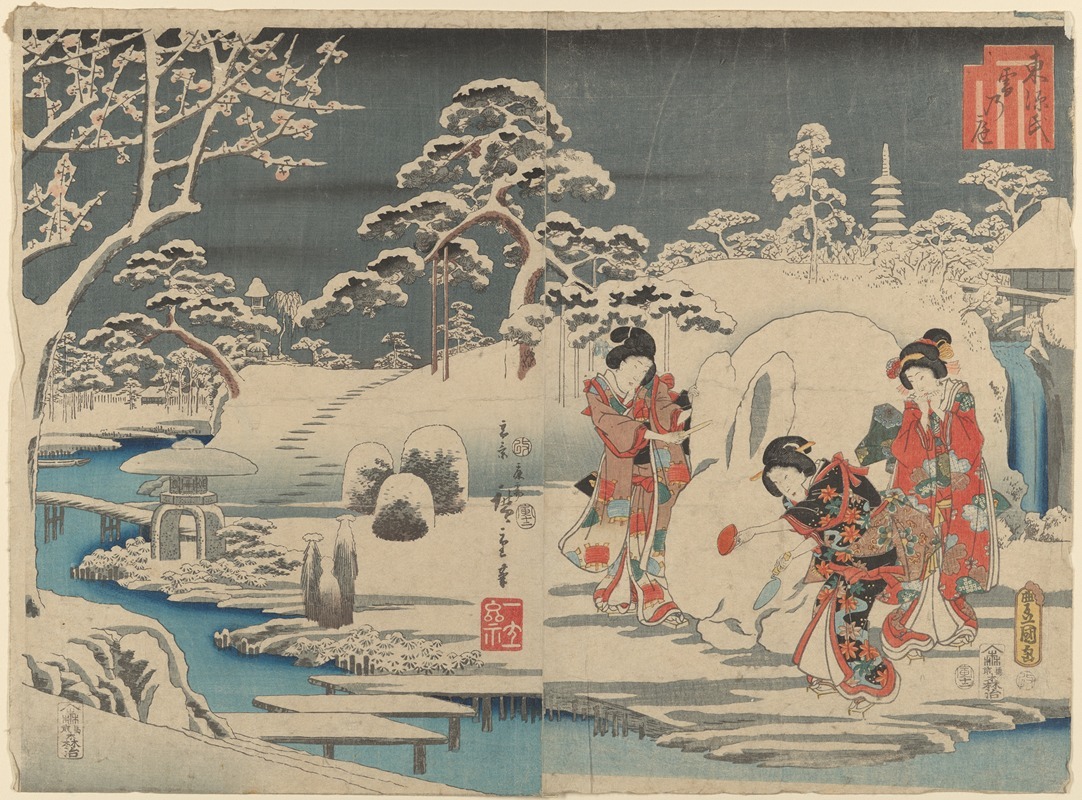
Three Women Making a Snow Rabbit in a Garden
A hand-painted replica of Andō Hiroshige’s masterpiece Three Women Making a Snow Rabbit in a Garden, meticulously crafted by professional artists to capture the true essence of the original. Each piece is created with museum-quality canvas and rare mineral pigments, carefully painted by experienced artists with delicate brushstrokes and rich, layered colors to perfectly recreate the texture of the original artwork. Unlike machine-printed reproductions, this hand-painted version brings the painting to life, infused with the artist’s emotions and skill in every stroke. Whether for personal collection or home decoration, it instantly elevates the artistic atmosphere of any space.
Andō Hiroshige, a renowned Japanese ukiyo-e artist of the Edo period, is celebrated for his landscapes and depictions of everyday life. One of his works, "Three Women Making a Snow Rabbit in a Garden," exemplifies his ability to capture the beauty and simplicity of ordinary moments. This piece is part of Hiroshige's broader oeuvre that often focused on the interplay between humans and nature, a common theme in ukiyo-e art.
The artwork portrays three women engaged in the playful activity of making a snow rabbit, a traditional Japanese winter pastime. This scene is set in a garden, which is depicted with the delicate attention to detail characteristic of Hiroshige's style. The garden setting, likely covered in snow, provides a serene backdrop that enhances the sense of tranquility and joy in the scene. The snow rabbit itself is a charming element, symbolizing innocence and the fleeting nature of life, as it will eventually melt away with the changing seasons.
Hiroshige's use of color and composition in this piece is noteworthy. He employs a subtle palette that reflects the muted tones of winter, with soft whites and blues dominating the scene. The women's kimonos add splashes of color, drawing the viewer's eye and highlighting the human presence within the natural setting. The composition is balanced, with the figures arranged in a way that guides the viewer's gaze across the scene, creating a sense of harmony and movement.
This work is a fine example of Hiroshige's ability to convey emotion and narrative through simple yet evocative imagery. The women's expressions and gestures suggest a sense of camaraderie and shared enjoyment, capturing a moment of leisure and creativity. This focus on everyday activities is a hallmark of ukiyo-e, which often depicted scenes from daily life, entertainment, and the natural world.
"Three Women Making a Snow Rabbit in a Garden" also reflects the cultural and social aspects of the Edo period. During this time, Japan experienced relative peace and stability, which allowed the arts to flourish. Ukiyo-e artists like Hiroshige played a significant role in documenting and celebrating the customs and traditions of the time. The depiction of women in this artwork highlights their role in society and the domestic sphere, offering a glimpse into the lives of individuals during this era.
Hiroshige's influence extends beyond Japan, as his works have inspired artists worldwide, including the Impressionists in Europe. His innovative use of perspective and emphasis on natural beauty resonated with Western artists, contributing to a cross-cultural exchange of artistic ideas. "Three Women Making a Snow Rabbit in a Garden," while perhaps not as widely known as some of his other works, embodies the qualities that have made Hiroshige a pivotal figure in the history of art.
In summary, "Three Women Making a Snow Rabbit in a Garden" is a testament to Andō Hiroshige's skill in capturing the essence of a moment. Through his masterful use of color, composition, and narrative, he creates a scene that is both visually appealing and rich in cultural significance. This artwork not only showcases the beauty of everyday life but also serves as a window into the world of Edo-period Japan, offering insight into the customs and values of the time.





